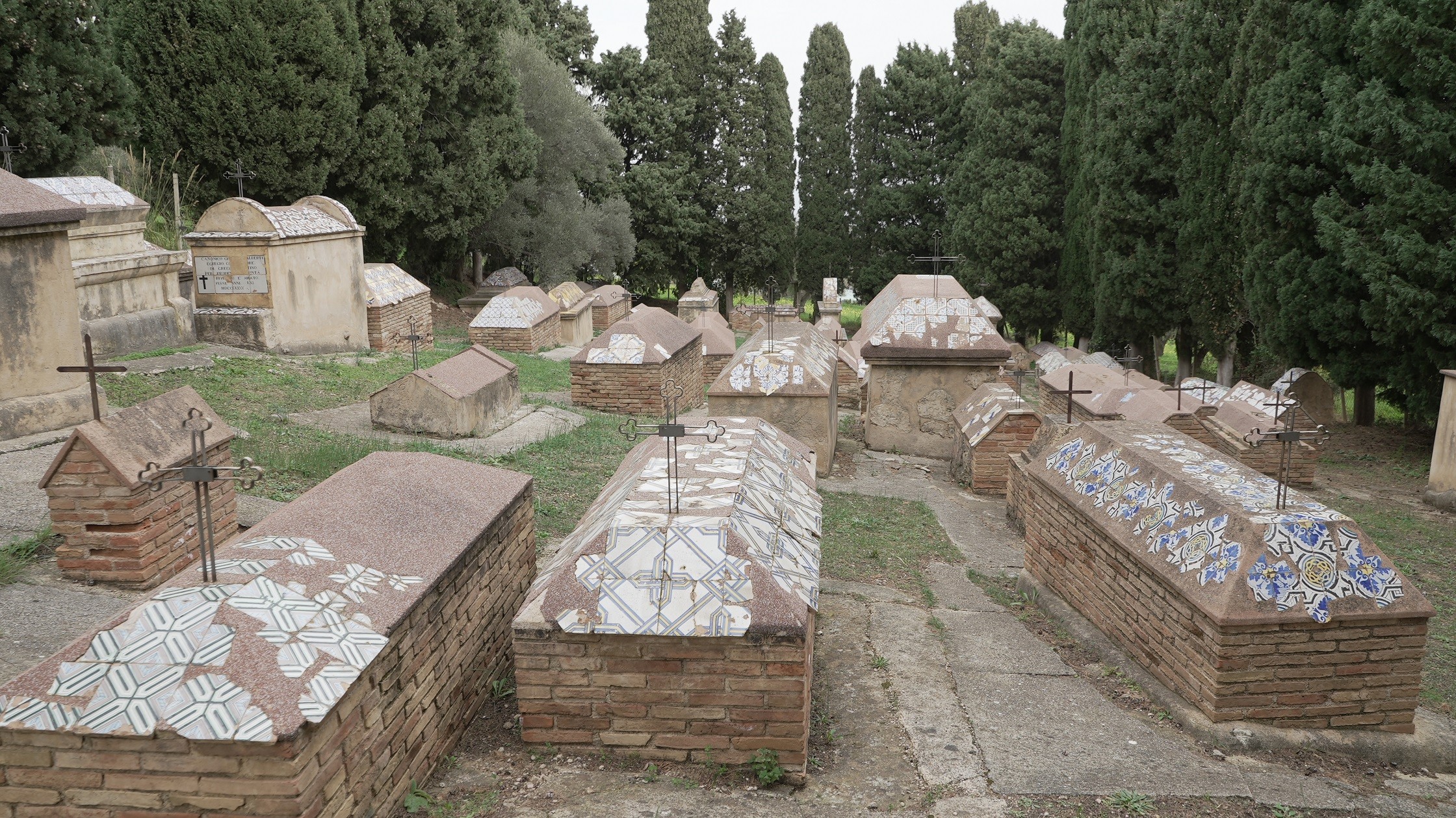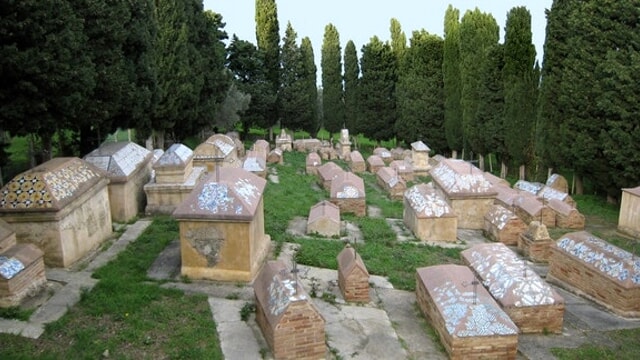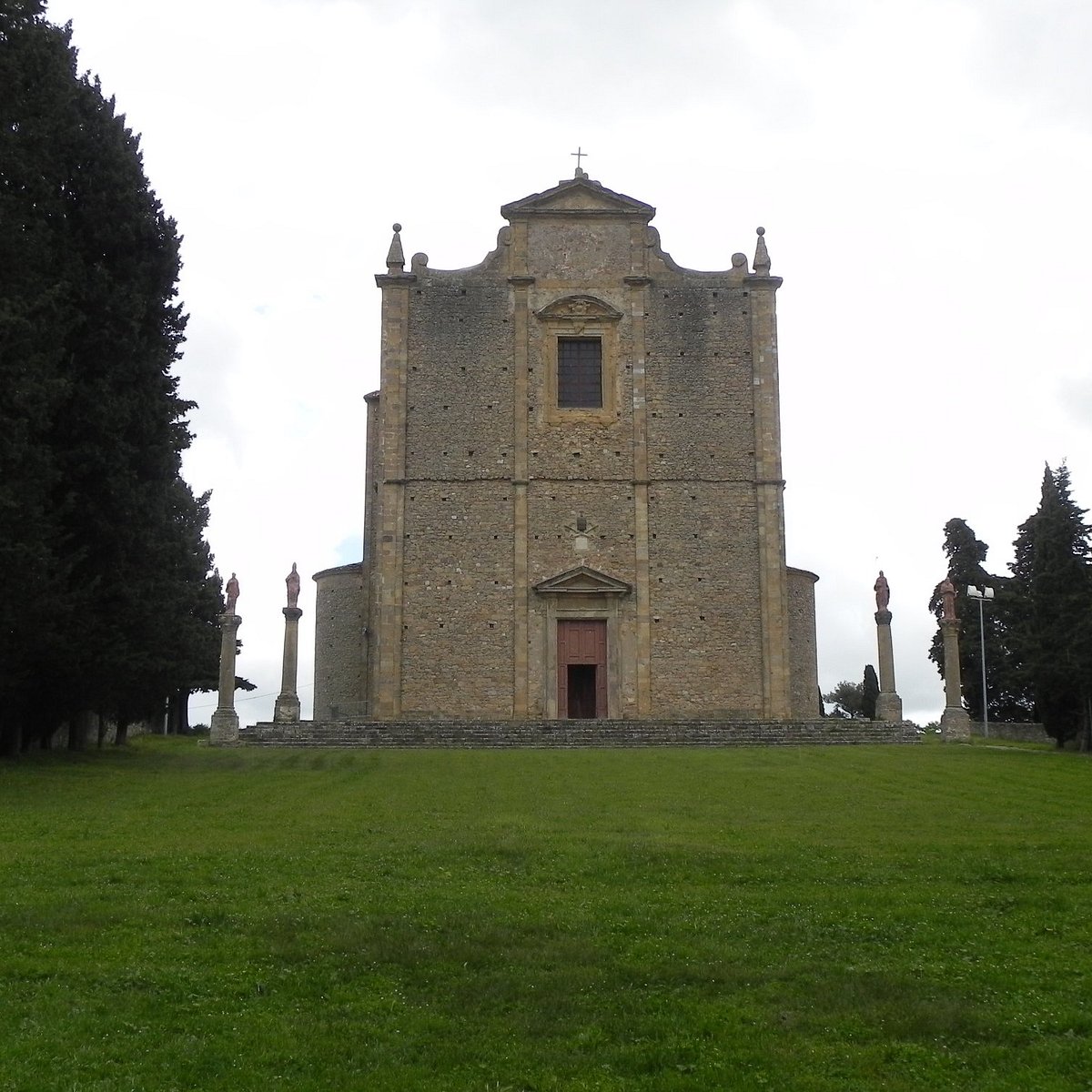Perched on the outskirts of the historic town of Volterra, the Ospedale Psichiatrico di Volterra once served as a sprawling mental institution that housed up to 6,000 patients at its height. Established in the late 19th century, this psychiatric hospital was a place of both hope and despair, where many patients spent their entire lives.

The facility officially closed in the 1970s following Italy’s mental health reform, but the remnants of the hospital, including its eerie cemetery, still linger. The abandoned buildings, with their crumbling walls and shattered windows, are a stark reminder of the past. Nature has begun to reclaim the site, with vines creeping over the structures and wild vegetation engulfing the grounds.

One of the most haunting features of the hospital ruins is the mural created by inmate Oreste Fernando Nannetti. Using the metal buckle of his uniform, Nannetti carved intricate and sprawling designs into the plaster walls, creating a vast mural that spans hundreds of meters. This artwork, a complex tapestry of symbols, words, and abstract figures, provides a unique insight into the mind of the artist and serves as a powerful testament to human resilience in the face of confinement. Unfortunately, the mural has suffered from decades of exposure to the elements, with parts of it now eroded or obscured.

The hospital’s cemetery, located nearby, is in a similar state of neglect. Here, many former patients lie buried, their graves unmarked and their names forgotten. The overgrown grass and crumbling tombstones create a melancholic atmosphere, a silent tribute to those who lived and died within the institution’s walls. The cemetery’s state of disrepair speaks to the broader societal neglect of the mentally ill during the time the hospital was operational.

Today, the ruins of Ospedale Psichiatrico di Volterra attract curious visitors and urban explorers who are drawn to its eerie beauty and tragic history. Despite the dilapidation, the site remains a poignant reminder of the past, offering a glimpse into the lives of those who once called it home.


